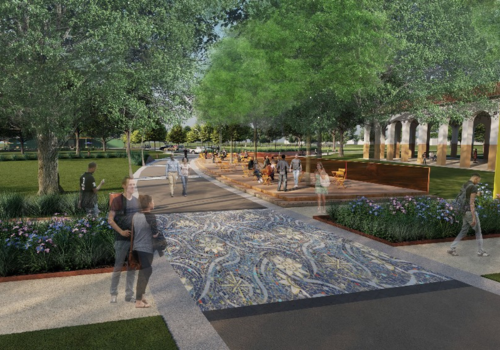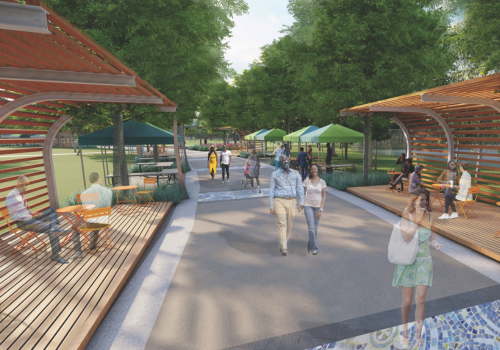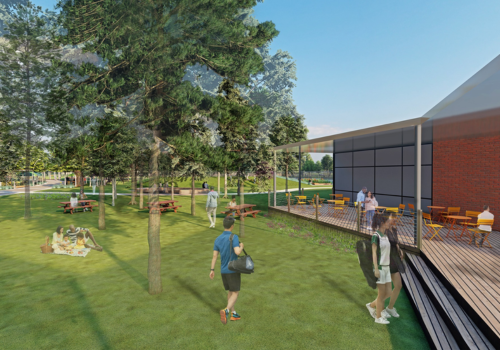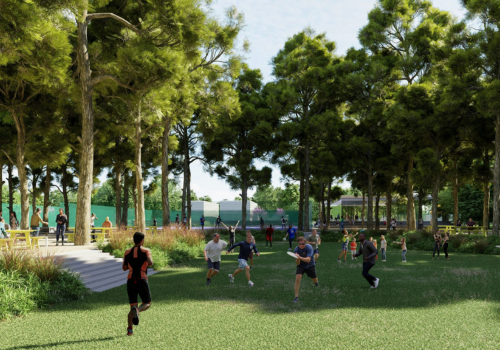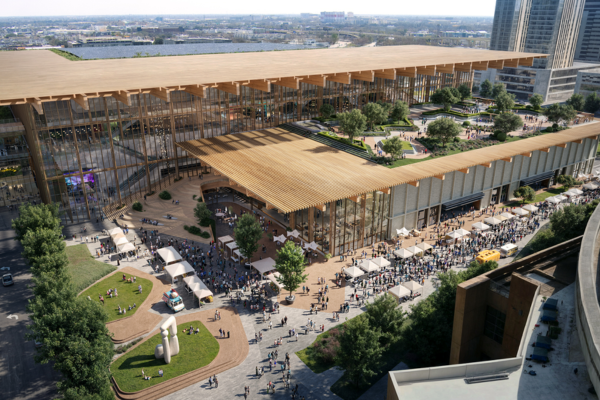MacGregor Park’s Transformative Renovation Project Secures $10M Federal Grant
Published Oct 21, 2024 by Hailea Schultz
Houston’s MacGregor Park has been awarded a $10 million grant from the U.S. Department of the Interior to support the park’s groundbreaking renovation project.
The grant comes from the department’s Outdoor Recreation Legacy Partnership program, which provides funding to enhance parks in economically underserved communities.
The City of Houston Parks and Recreation Department (HPARD) and the Houston Parks Board (HPB) unveiled plans for the $54 million renovation project last year, following a $27 million donation from the Kinder Foundation and years of community feedback. This initiative, which is part of the 65-acre park’s master plan, aims to improve the quality of life for residents in Houston’s Third Ward neighborhood, reinforcing the park’s importance as a community hub.
“MacGregor Park has been an important greenspace in our community, and this investment underscores the City’s commitment to provide high-quality greenspaces to all Houstonians,” said Kenneth Allen, Director of HPARD, in a statement. “The planned renovations will not only preserve the park's rich legacy but also enhance its role as a vital hub for recreation, culture, and community connection.”
The master plan includes major improvements to the park, such as upgrading the Homer Ford Tennis Center with state-of-the-art tournament-hosting capabilities, and renovations to both the swimming pool and community center. The park's trail system will be extended by 1.25 miles, connecting it to the Bayou Greenways trail along Brays Bayou, which is part of a network of over 150 miles of trails throughout the city. Additionally, a new amphitheater will be built near the bayou for events and gatherings, along with an ADA-accessible playground.
The internationally acclaimed Hood Design Studio was selected to lead the project earlier this year. Design work is already underway, with construction set to begin late next year. Creative Director Walter Hood shared that the firm seeks to blend nature into the park’s design, incorporating native plants and other naturistic elements.
“Situating this park within nature is an aspect that many other parks in Houston have benefitted from, but to date, MacGregor has not,” Hood states. “Together, we are committed to creating a revitalized space that enhances MacGregor Park as a beloved community space, that is idiosyncratic, embraces difference, and tells a unique story.”
The $10 million grant brings the project’s public funding total to $24.5 million, bolstered by contributions from the City of Houston, its Tax Improvement Plan, Tax Increment Reinvestment Zone 7 and former U.S. Representative Sheila Jackson Lee. Generous donations have also been made by the Brown Foundation and Texas Children’s Hospital.
Learn more about Houston’s parks and green spaces.
 The Houston Report
The Houston Report